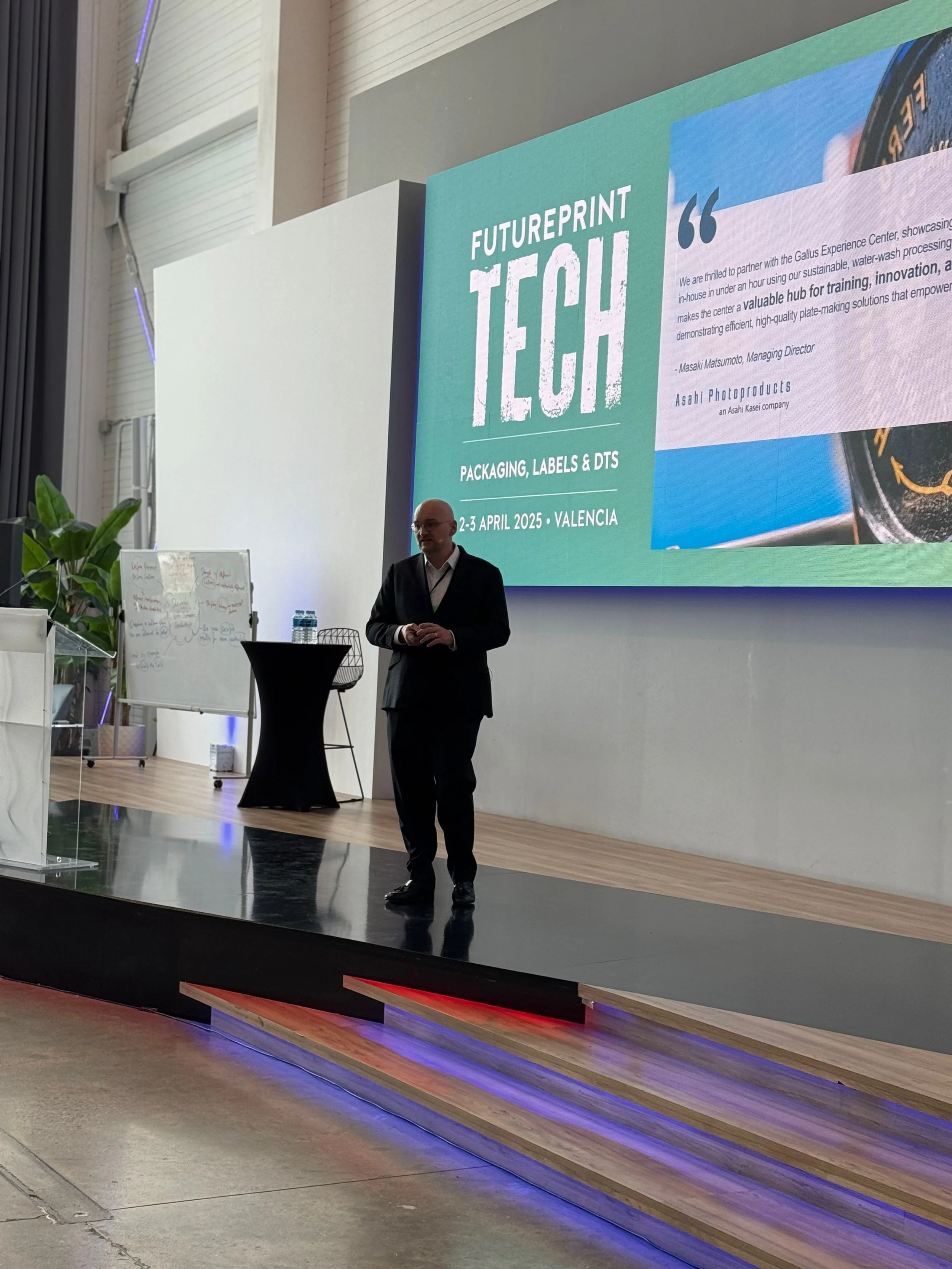Closing the Gap: Gallus Rethinks Digital Adoption for Labels
At FuturePrintTech Packaging, Labels & DTS 2025 in Valencia, Dario Urbinati, CEO of Gallus Group, returned with a focused message: bridging the digital “expectation gap” in label printing will require more than incremental innovation. It demands structural change—in cost, flexibility, and collaboration.
This was not an exercise in tech evangelism. Rather, it was an operational audit of the promises and pitfalls of digital transition. Despite the continued growth of digital solutions in labels, adoption across the sector remains uneven. A key barrier, Urbinati argued, is total cost of ownership (TCO), especially for converters wary of capital expenditure without immediate returns. The gap between what digital could offer and what converters experience today remains a stubborn one.
To address this, Gallus is evolving on multiple fronts. At the centre of this effort is the Gallus Experience Center in St. Gallen, which opened in 2023. Designed as a physical and intellectual hub, it has hosted over 1,500 visitors, 30 technical training sessions, and 25 industry events. Beyond demonstrations, the space functions as a collaborative environment where OEMs, universities, and technology partners, such as ACTEGA, co-develop practical applications. The goal is to move beyond transactional sales toward ecosystem-level innovation.
One outcome of that collaborative model is the recently launched Gallus MatteJet—a digital mattifying process now commercially available on the Gallus One platform. MatteJet enables in-line matte finishing without changing inks or applying overprint varnish. It eliminates the need for separate finishing steps or machines, offering a simplified, cleaner alternative for segments like wine and spirits, where visual tactility and premium aesthetics are paramount.
MatteJet also aligns with the broader “System to Compose” framework Gallus promotes—modular platforms built for adaptability, allowing converters to configure systems based on application-specific needs. The new innovation runs at competitive digital speeds, supports both 340mm and 430mm web widths, and allows seamless switching between gloss and matte at the push of a button.
The business case is compelling. According to Verified Market Reports, the global wine label market was valued at $3.5 billion in 2024 and is projected to reach $5.8 billion by 2033—a segment increasingly shaped by short-run demands and premium finishes. MatteJet’s entry here is not simply a technology release but a strategic response to shifting economics in packaging.
Still, Urbinati cautioned that none of this will matter without rethinking how industry participants collaborate. After two years running the Experience Center, Gallus has seen the benefits—and the limitations—of cross-industry cooperation. Challenges around intellectual property, cultural alignment, and strategic priorities remain persistent. As Urbinati noted, “You cannot dictate collaboration.”
Yet the potential payoff is clear. Rather than designing monolithic systems, Gallus is opting for modularity and openness. That strategy reflects a sober view of the label industry’s current state: mature, margin-pressured, and hesitant to absorb risk. But it is also one that recognises digital adoption as a process—not a product.
By confronting the cost-value equation head-on and investing in the infrastructure to trial and refine new approaches, Gallus is not only closing the expectation gap—it is recalibrating what realistic progress looks like in an industry built on precision.

